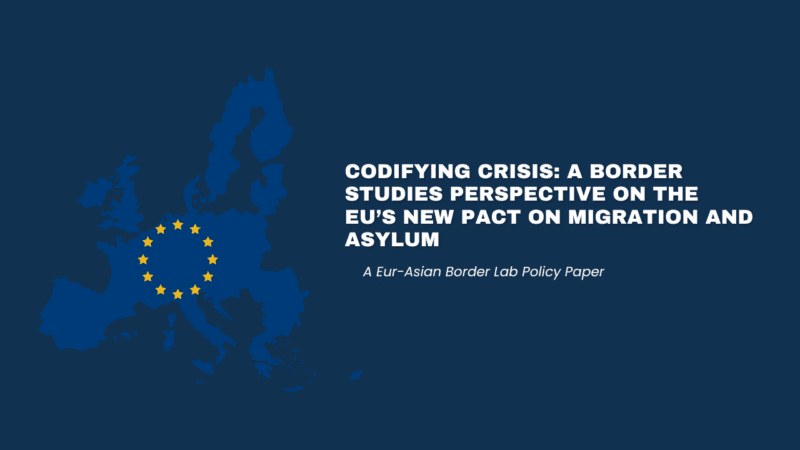
The European Union’s new Pact on Migration and Asylum marks the most ambitious reform of EU migration governance in nearly a decade. Designed to enter into force in June 2026, it promises a “fresh start” for asylum management. Yet, beneath its technical language lies a deeper political shift.
This Eur-Asian Border Lab policy paper interprets the Pact through a border studies lens, revealing how it codifies practices first introduced during crisis moments – rapid screening, containment zones, and probabilistic filtering – into the permanent architecture of EU border governance. By tracing the interplay between law, geopolitics, and humanitarian principles, the paper offers a critical, interdisciplinary reading of how Europe’s borders are being redefined in the name of efficiency, solidarity, and control.
Key points
- The Pact institutionalises crisis-era mechanisms, transforming temporary border measures into long-term governance tools.
- Its “mandatory but flexible” solidarity framework reshapes how responsibility is distributed – allowing states to substitute financial contributions for relocations.
- The Pact expands the “legal fiction of non-entry,” creating new liminal spaces at Europe’s borders that blur the line between entry, detention, and asylum.
- From a border studies perspective, the Pact redefines solidarity, sovereignty, and belonging – embedding new hierarchies within the EU’s common asylum system.
Keywords: EU Migration Pact; Border Studies; Asylum Policy; Solidarity Mechanism; Probabilistic Bordering; Crisis Governance